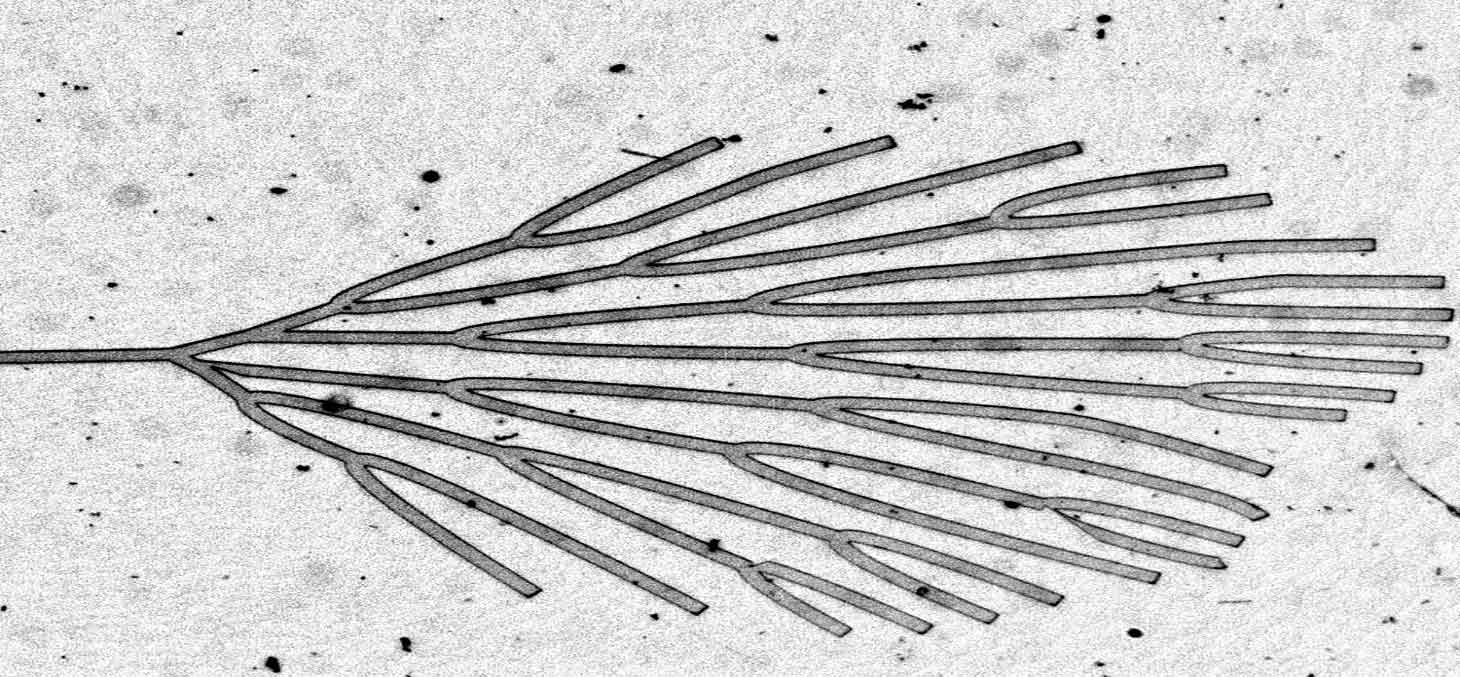- Share
- Share on Facebook
- Share on X
- Share on LinkedIn

Philippe Marmottant, Catherine Quilliet, Benjamin Dollet, Pierre Thibault, Olivier Stephan
The physics of plants is a young discipline, which explores the surprising properties of plants: rapid movements for example during the cavitation of the sap under negative pressure, change of shape during a change of humidity, communication by contact between plant cells. This theme also extends to the production of biomass by algae in order to contribute significantly to decarbonation by capturing CO2, and also to the production of cellular biomaterials in order to obtain an artificial skin or pancreas.
- Drying of biomimetic sheets
- Microfluidics in cellulose microfibril channels
- Communication of cells in mechanical contact: winding a pollen tube around a pistil papilla [Collaboration with Karin John (MC2 team) and Isabelle Fobis (RDP, Lyon)].
- Biomass by the production of algae
- Bio-materials: artificial skin, artificial pancreas
Drying of biomimetic sheets
Trees are at risk of mortality under drought conditions by embolism, i.e. by nucleation and growth of air bubbles invading their sap network. However, the physical mechanisms of this invasion remain poorly understood; the goal of this project is to elucidate them, based on physical biomimetic experiments. Thus, we produce artificial leaves with microfluidic channels reproducing a network of veins, we measure the dynamics of bubble growth in these networks, and we seek to explain these dynamics by theoretical modeling. This project relies on collaborations with specialists in tree embolism at INRAe Clermont, and physicists at the Institut de Physique de Nice.
Ludovic KEISER (post-doc 2021 -), Benjamin DOLLET, Philippe MARMOTTANT
Collaborations : Xavier NOBLIN, Céline COHEN (Institut de Physique de Nice, Université Côte d’Azur) ; Hervé COCHARD, Eric BADEL, José Torres-Ruiz (PIAF, INRAe Clermont)
Funding: ANR PhySap
Microfluidics in cellulose microfibril channels
In the last decade, paper has become a material that can be used to fabricate microfluidic devices for physical and biological applications. However, these applications are limited by the lack of tightness of the channels, due to leakage of liquid by imbibition in the interstices between the fibers.
In this project, we aim to develop a new class of microfluidic devices with channels directly embossed in a translucent "pure cellulose" material, made of cellulose nano- or micro-fibrils. The aim is to characterize the water flow through such a material, in order to evaluate the tightness of the channels.
Raj KUMAR (post-doc 2020-), Philippe MARMOTTANT, Benjamin DOLLET, Pierre THIBAULT

- Share
- Share on Facebook
- Share on X
- Share on LinkedIn